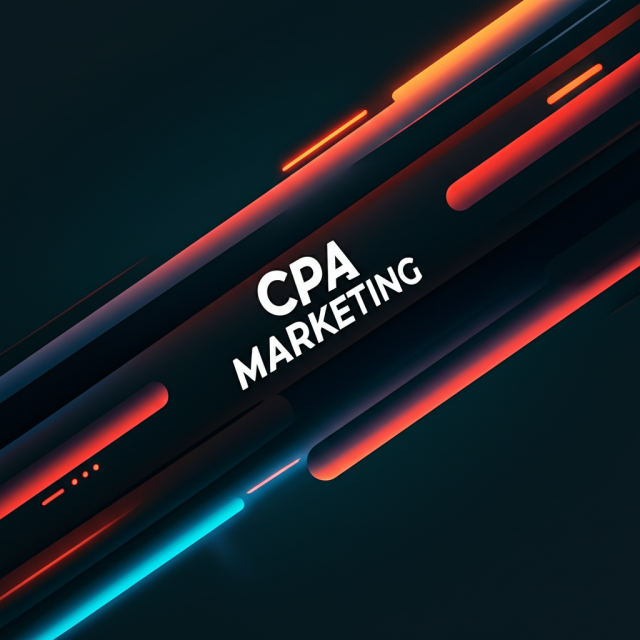The Ultimate Guide to High-Converting CPA Marketing Campaigns

Understanding CPA Marketing: Models, Metrics, and Why It Matters
Cost-Per-Action (CPA) marketing has revolutionized how advertisers and affiliates collaborate. Unlike traditional Cost-Per-Click (CPC) or Cost-Per-Mille (CPM) models—where you pay for clicks or impressions—CPA shifts risk onto the publisher until the desired action occurs. That action could be a form submission, a purchase, a download, or an app install. It’s the gold standard for performance-driven campaigns because every dollar is tied to a measurable outcome.
Here’s why CPA stands out:
- Risk Transfer: You only pay when a conversion happens, so wasted ad spend drops dramatically.
- ROI Clarity: CPA models provide crystal-clear ROI metrics—cost per lead, cost per sale, cost per download—so you can optimize every cent.
- Flexibility: CPA campaigns work across channels (search, social, native, email), devices, and verticals, making them ideal for both B2C and B2B.
To succeed, you need to master the art of aligning offers, creatives, and audiences. In this section, we’ll break down the core CPA models and show you how to benchmark performance against CPC and CPM setups.
CPA vs. CPC vs. CPM: A Quick Breakdown
Let’s visualize how each model works:
- CPM: You pay per 1,000 impressions—great for brand awareness but can be costly without guaranteed clicks.
- CPC: You pay per click—better for performance, but clicks don’t always equal sales or leads.
- CPA: You pay per action—ultimate efficiency, as every dollar is directly tied to a lead, sale, or install.
CPA is the most transparent model for ROI-driven marketers. Instead of guessing at click-through rates (CTR) or viewability, you focus on driving high-intent traffic that completes the desired action.

Exploring Top CPA Offer Types and When to Use Them
CPA isn’t one-size-fits-all. Different verticals and goals demand specific offer types. Let’s dive into the most common CPA structures and when each shines.
Cost per Lead (CPL)
CPL campaigns pay for completed lead forms—name, email, phone number, or other qualifying information. Ideal for:
- B2B services collecting decision-maker details.
- Real estate agents capturing homebuyer inquiries.
- Educational institutions gathering prospective student info.
Pro Tip: Use progressive form fields to improve completion rates. Start with name/email, then request more details post-conversion.
Cost per Sale (CPS)
CPS (also known as CPA sale) pays only when a purchase is made. Perfect for e-commerce brands and retail affiliates. Key benefits:
- Direct revenue attribution.
- High average order values can justify bigger media buys.
Pro Tip: Leverage dynamic product ads and retargeting to drive upsells and cross-sells on abandoned carts.
Cost per Download (CPD)
CPD targets software, ebook, or asset downloads. Often used by SaaS vendors and content publishers. Ensure you have a seamless download experience to minimize drop-off.
Cost per Install (CPI)
CPI is crucial for mobile app marketers. You only pay when users install your app. To boost qualified installs:
- Use engaging video demos in social ads.
- Incentivize installs with welcome offers.
Hybrid Models (CPL + CPS)
Some networks allow blended pricing—part CPL, part CPS—to balance lead volume and purchase intent. These hybrids can optimize budgets across the entire funnel.

Mastering Audience Segmentation for Laser-Focused CPA Campaigns
Even the most compelling CPA offers fall flat without the right audience. Segmentation is the secret sauce that transforms good campaigns into great ones.
Demographic Targeting
Age, gender, income, education—start broad and refine based on performance data. For example, a premium B2B webinar might perform best among 35–50 year-olds with director-level roles.
Behavioral Targeting
Target users based on on-site behavior (product page views, cart abandoners) or off-site signals (interest in related topics). Behavioral segments often deliver 20–30% higher conversion rates than cold audiences.
Lookalike Audiences
Use your best customers—those with highest LTV or repeat purchase rates—as a seed to build lookalike models on Facebook Ads or Google Similar Audiences. This multiplies your reach while maintaining strong intent signals.
Pro Tip: Continuously refresh segments every 7–14 days to avoid audience fatigue and stale data.

Leveraging AI and Automation to Supercharge Your CPA Results
AI and automation tools are no longer nice-to-haves—they’re essential for scaling. From bidding to creative personalization, automation can shave hours off manual tasks and unlock higher ROI.
Predictive Bid Adjustment
Machine learning algorithms predict conversion likelihood in real-time. They adjust bids upwards for high-intent users and downwards for low-value clicks, maximizing budget efficiency.
Dynamic Creative Optimization
Serve personalized ad variations—headlines, images, CTAs—based on user data. Tests show a 30–50% lift in conversion rates when ads dynamically match user preferences.
Chatbot Lead Qualification
Integrate chatbots on landing pages to pre-qualify leads 24/7. Bots can ask key qualifying questions, route hot leads to sales reps instantly, and free up human resources.
Automation isn’t a set-and-forget tactic. Monitor performance, tweak rules, and retrain models to ensure sustained uplift over time.
Conclusion and Next Steps
High-converting CPA campaigns blend strategic offer selection, razor-sharp audience segmentation, and cutting-edge automation. By understanding CPA models, selecting the right offer types, and leveraging AI-driven tools, you can shift risk, maximize ROI, and scale sustainably.
Ready to launch your next CPA powerhouse? Start by auditing your existing funnel, mapping out your ideal audience segments, and testing one new CPA model this week. With data-driven tweaks and continuous optimization, you’ll transform ad spend into measurable growth.
Here’s to high-performance campaigns and record-breaking ROAS!









